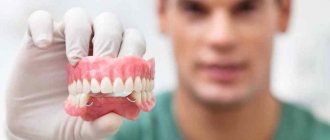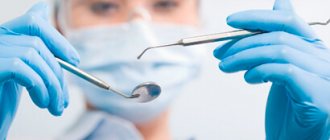What is a “dentist” like?
- good
- (more. )
Reference information on the declension of nouns and adjectives, verb conjugation, as well as the morphemic structure of words.
Who is a dentist?
Before dealing with narrow specializations, let’s consider who a dentist is in general. This is a doctor who has a higher education and has the right to carry out all types of dental treatment from therapeutic to prosthetics.
There are also dentists. Despite the fact that people call all dentists this way, in fact they are specialists with secondary specialized education. Their field of activity is dental treatment, but they do not have the right to undergo surgery.
In addition to dentists who work directly with patients, there is a dental technician. This specialist is engaged in the manufacture of prosthetics.
The second name of this specialist is odontologist. The main function of this doctor is to treat caries and its complications. The first thing you meet with a dental therapist is when you come to the dental clinic. He makes an initial examination and decides on treatment methods. His qualifications are sufficient to install fillings in carious cavities. During the filling process, the doctor examines each tooth individually in order not only to cure caries, but also to recognize other defects. He also treats gums and other inflammatory processes in the oral cavity. A dental therapist can diagnose the disease and select individual treatment or refer you to another specialist.
Dentist profession
A dentist has more authority regarding the conduct of medical procedures. Specialty training lasts 6 years, during which doctors master several important disciplines. Upon completion of training, the specialist is asked to choose one of the areas: therapist, surgeon, orthodontist, orthopedist or hygienist.
Comprehensive training is necessary in order to know the structure of the human body and be able to establish the relationship of one organ with another. The doctor also has to master the basics of psychology, since some patients come to the office in a depressed state, which aggravates the therapy.
Each category in dentistry should be considered in more detail.
In some cases, the dentist is unable to provide assistance to a small patient. This is due to several factors:
What is the difference between a dentist and a dentist: who is he and what does he do?
The word “dentist” is rarely used in our country; most often this is the name given to foreign specialists involved in the treatment of oral diseases. In the Russian-speaking environment, it is synonymous with the concept of “dentist”.
Orthopedic dentist - description of specialty
The name “orthopedic dentistry” was given to medical qualifications for the protection, restoration and prosthetics of the maxillofacial area. Sooner or later, every person needs to protect damaged tissue with a crown or prosthetics. The rating of dentists is opened by an orthopedist.
Situations in which the help of an orthopedist is needed:
- Tooth decay and loss. In this case, its function is restored by installing an artificial one.
- Protection from destruction. If only part of the bone tissue has been corroded, and the roots are intact and healthy, a crown is installed on such dental tissue, which stops further destructive process.
- The teeth are completely intact and healthy, but their appearance does not suit the owner. Installing ceramic plates will eliminate problems such as chips and scratches.
If the tooth tissue and root are healthy, then restoration is sufficient. Otherwise, prosthetics are performed. To determine what treatment plan is needed, the doctor conducts an examination, after which he makes a dental modeling in his laboratory. The orthopedist also deals with the correction of the appearance of the dental system, i.e. issues of aesthetic dentistry.
- Tooth decay and loss. In this case, its function is restored by installing an artificial one.
- Protection from destruction. If only part of the bone tissue has been corroded, and the roots are intact and healthy, a crown is installed on such dental tissue, which stops further destructive process.
- The teeth are completely intact and healthy, but their appearance does not suit the owner. Installing ceramic plates will eliminate problems such as chips and scratches.
Manufacturers of intraoral scanners
Today, there are 7-8 companies widely represented in the world that produce intraoral scanners. Firstly, the ones I talked about. This is CEREC from the German company Sirona, this is the iTero scanner, which is currently produced and owned by Align Technology. This is a company that also makes Invisalign aligners. This is the American company Carestream. This is the European company 3Shape with a TRIOS scanner.
Recently a very worthy scanner has appeared on the market - in terms of scanning quality and convenience, and most importantly, with the most reasonable price. The scanner is called i500. From the Korean company Medit.
Star Smile is a partner of major scanner manufacturers
We, the Star Smile company, have established contact and cooperation with all of the above manufacturers, which allows our clients, when using these scanners, not to have to deal with sending stl files to our company, but simply to create an ID scan number in their personal account, and we, using our agreement, online connection with the servers of scanner manufacturers, we will independently gain access to the intraoral scan, to stl files and will be able to begin production of aligners.
One of our last contracts that we were able to conclude was a contract with Sirona, thanks to which we now have access to CEREC scanners. Any client who owns a CEREC scanner (we are primarily talking about the latest Omnicam models because the previous models are not very suitable for orthodontics, they are mainly intended for orthopedics) can take an intraoral scan of the patient and immediately send this intraoral scan to us at laboratory for the production of aligners.
This is a very important contract for us, because in both Europe and America CEREC occupies a leading position in the intraoral scanning market. I think that up to 50% of our new customers who register on our website in Europe and North America own CEREC scanners.
What other advantages of intraoral scanning for Star Smile clients?
Another advantage is the speed of data exchange between the clinic and us, as manufacturers of aligners.
If the doctor takes traditional impressions of teeth, then in order for us to begin production, these impressions must either be scanned in-house at the clinic, or sent to our office for digital 3D scanning.
Sending dental impressions and the process of scanning them into 3D dental models takes quite a lot of time. On average, it's probably two to three business days.
If the doctor works with an intraoral scanner and has scanned the patient’s oral cavity, then we can begin production of the virtual SetUp as part of the aligner production almost immediately after the doctor has completed the scan and registered the order in our system.
We see that on average this reduces the production time for a virtual SetUp by 2.5 days, which is very good, considering that the average production time for a virtual SetUp is just over 4 days. This means that those clients who start working with intraoral scanning receive a virtual SetUp in two business days, even a little faster.
Another key advantage of intraoral scanning and intraoral scanners over traditional impressions is online control over the quality of the scan, which can be carried out by the doctor.
Let’s imagine such a situation that the doctor took impressions of the teeth, looked at them, and they seemed to him without errors, without flaws. I sent these casts to the laboratory of any manufacturer. And then, during 3D scanning, it turned out that the cast was not of sufficient quality. Somewhere there are braces, for example, somewhere, perhaps, the gingival margin is not “awakened” well enough, somewhere there are air bubbles or saliva. All this affects quality.
When working with traditional casts, this is only visible when casting a plaster model and scanning this plaster model. This is a very painful situation when it turns out that the impression is not of sufficient quality and cannot be used in the production of aligners. This is unpleasant because you have to call the patient to have impressions of his teeth taken, and a lot of time is wasted. We spend at least two or three days taking new impressions and sending them back to 3D scanning and production.
If the clinic works with an intraoral scanner,
then the doctor or his assistant who is engaged in scanning, during the scanning process can visually, on the computer screen, control the quality of the resulting scan, the quality of the digital model. If he sees that there is a mistake somewhere, then this place can be immediately rescanned. This virtually eliminates errors in scans, meaning there is no need to return the patient for rescanning.
Undoubtedly, the intraoral scanner is the most promising and useful technique for 3D dental modeling in the present and near future. But it’s also very expensive. We have diligently avoided the cost of scanners in the article, because now you will be offered a service that will solve your scanning problems without purchasing a scanner. Why buy a scanner, since the cost of intraoral scanners starts from 15 thousand euros? Taking into account all the above advantages, our company Star Smile launched a new service in January 2022, which we call “On-site scanning”.
What types of dentists are there?
Prothodontists, orthodontists, or prosthetists work to create artificial teeth such as dentures, custom implants, and bridges. They can communicate with patients, participate in research and carry out orders related to the development of artificial teeth individually for each customer.
What are the responsibilities of such a specialist?
There are cases when teeth that normally perform chewing work look unattractive in appearance, causing awkwardness when communicating with others and emotional distress in a person. The problem can be solved with the help of veneers (overlay porcelain plates) that eliminate cosmetic defects (discoloration, shape) of the front teeth.
In one or two appointments, the orthopedist will use ceramic veneers to make your smile visually flawless and provide protection for the outer layer of the incisors. The service life of the linings is from 3 years, depending on the materials, installation method, and the skill of the doctor.
It is recommended to cover dental units that are weak in structure and susceptible to destruction with a crown to avoid the risk of their splitting and to prevent rapid deterioration. To prevent destruction and rapid loss of a damaged tooth, dentures are used to completely or partially restore it.
A high quality of life becomes impossible with excessively damaged, partially missing molars. Difficulty chewing food has a detrimental effect on the functioning of the gastrointestinal tract, causing diseases of the digestive system and other problems. In addition to the importance of the front incisors for aesthetic reasons, the role of other teeth is no less important: canines, premolars, molars. You should not consult a dentist if you have pain, the last stage of tooth decay, when the provision of orthopedic care becomes very difficult. If you lose any dental units (even distant ones), you need prosthetics to avoid stress on the teeth and their premature destruction.
The absence of molars as a result of periodontal damage, an accident, or in elderly people requires restoration of the dentition by an orthopedist using removable dentures. Such prosthetics were not an easy test for patients; the “false jaws” were bulky and uncomfortable. The materials for their manufacture (toxic and inelastic) did not fit well under the gums, often causing an allergic reaction, rubbing, and irritation of the soft tissues of the mouth.
Modern materials used for crowns and bridges do not wear out and last for many years (as a rule, they should be changed after 7 years), unless oral problems arise: weakening of the periodontium, exposure of the neck of the tooth, infection and inflammation of the root.
The durability and strength of crowns depends on the material:
- metal (steel, titanium, gold, platinum),
- metal ceramics (metal base with ceramic coating),
- ceramics with the addition of zirconium dioxide for strength,
- plastic can be used for temporary crowns.
When installing crowns, the root remains alive, the crown part of the tooth is corrected, the method is cheaper than implantation, which is the advantage of crowns. Disadvantages of restoring a tooth with a crown: the need to file the main and adjacent teeth, the risk of inflammation and tooth destruction in case of unsuccessful prosthetics.
If several dental units are lost in a row, a bridge (cast, metal-ceramic or ceramic) is made, which is placed on the supporting teeth. Bridges are durable and affordable, but, unfortunately, you have to file down the supporting teeth.
Fully or partially removable dentures are used to restore chewing function in the absence of a dental row.
Several dentists of different specializations are involved in the process of prosthetics.
According to the job description, the orthopedist is obliged to:
- prescribe an examination, select a treatment method,
- select a design and material for it (to be agreed with the patient),
- familiarize the patient with the treatment plan (indicating the dates of the visit, the production time of the product planned by the dental laboratory).
- try on, adjust and correct the finished product:
- install and fix a crown, bridge, prosthesis,
- remove the prosthesis if necessary, assess its condition,
- give recommendations to the patient on how to care for the structure.
In the manufacture of prosthetics, modern orthopedics uses special computer programs and the latest materials and innovative methodological developments.
Defects and anomalies of dental units that do not allow a person to chew fully, smile freely, or talk can seriously poison a person’s life: give rise to a lot of complexes and bring physical and moral suffering. Prosthetics is a dental service in any country in the world. The variety of dental services is complemented by the development of techniques and materials used.
What is the name of a dentist?
Modern dentistry provides a range of services, so today there are more and more different specializations in this field.
Dental professions:
- Dentist;
- dentist;
- orthopedist;
- orthodontist.
In this article we will discuss each specialization separately. You will learn: what is the name of the doctor who inserts teeth, and also whether a dentist has the right to remove teeth, which doctor treats stomatitis, and much more.
Dental professions:
On-site 3D scanning from Star Smile company
While on-site scanning
operates in Moscow and St. Petersburg. Thanks to this service, all our clients - clinics or doctors - can call a Star Smile employee with an intraoral scanner, who, by agreement, will come to your clinic at the appointed time and scan the patient.
How much does on-site 3D scanning cost?
By the way, the on-site scanning service is free when ordering Star Smile aligners. It increases the accuracy of aligners, speeds up the process of their production, and eliminates the possibility of errors when taking impressions. And as an added bonus: your clinic will look more advanced, high-tech to your patients.
For now, this service is available in Moscow and St. Petersburg. Since we Star Smile operates in more than 70 cities of Russia, we are already considering other cities in which on-site scanning will be in demand by orthodontists and dentists.










